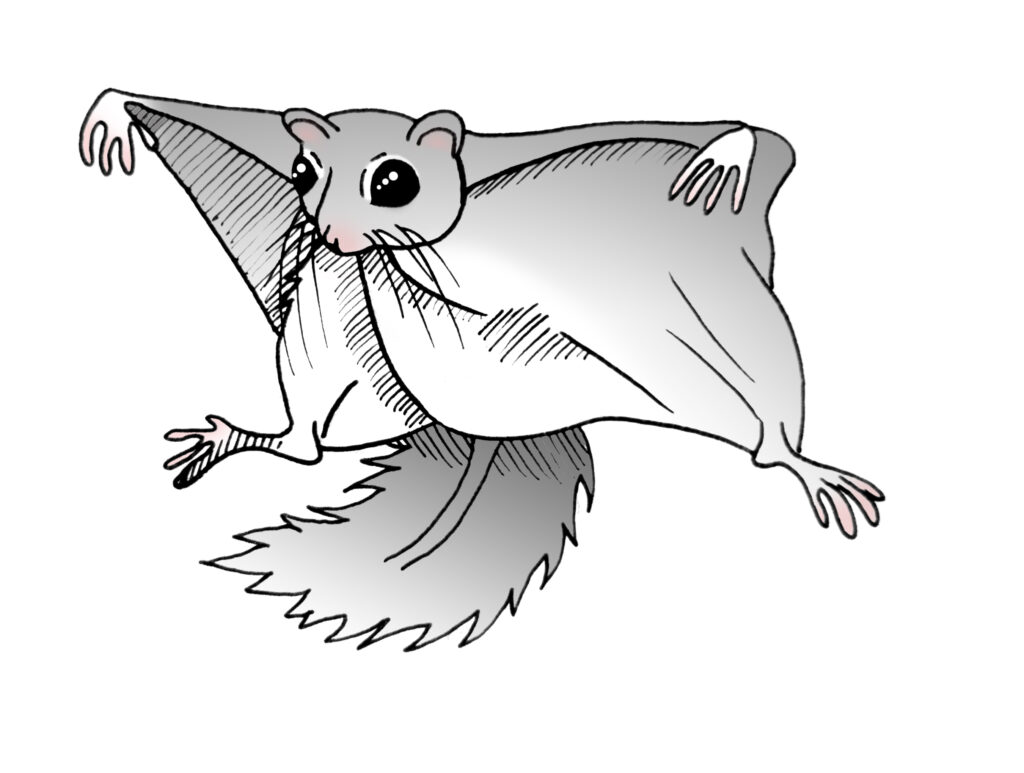Habitat banking for Siberian flying squirrel? One in five forest owners interested

The protection of biodiversity mostly attracts young and educated owners of large forest holdings.
Every fifth Finnish family forest owner would take account of the Siberian flying squirrel not only in areas where conservation is obligatory, but in their entire forest, if they received compensation through a habitat bank. Current legislation forbids the deterioration or destruction of the breeding grounds and resting places of the squirrel.
This is shown by a master’s thesis from the Department of Forest Sciences at the University of Helsinki. According to Mr. Lauri Tapio, the author of the thesis and field manager at the Central Union of Agricultural Producers and Forest Owners (MTK), the owners of bigger forest holdings in particular would participate in habitat banking, if a bank was to be established in Finland.
More than half of the forest owners showing interest in habitat banking had over 50 hectares of forest. One in three of them owned more than 100 hectares.
The group was also younger and better educated than the average. Only one in ten of them was retired, despite the fact that nearly one half of Finnish forest owners are pensioners.
“Mature forest owners begin to think about handing over their forest. They do not want to place restrictions on the forest and for the future owners just before doing that,” says Tapio.
Plans for Finnish habitat bank
In Finland, the preconditions of setting up a habitat bank are currently being studied in a joint project by the University of Helsinki, the Finnish Environment Institute and the University of Jyväskylä.
The aim of the habitat bank is to create a compensation market, which is based on the voluntary protection of biodiversity.
The Bank would allow demand and supply to meet each other on the compensation market.
The habitat bank would act as an intermediary through which loss of biodiversity could be offset by financing improvements somewhere else.
If a flying squirrel nesting area, for example, was endangered because of a motorway, this could be compensated for by paying for the acquisition or restoration of forests elsewhere.
In 2014, the Pellervo Economic Research (PTT) published a study about the pros and cons of a habitat bank. The study reviews the ecological and financial risks of bio banking. Biodiversity may be too complex a mechanism for commercialisation. However, with careful planning, it could be helpful in preventing or slowing down the loss of biodiversity in Finland.
Countries that have operating habitat banks include Germany, the USA and Australia. Member states of the European Union employ varying mechanisms where the compensation is often determined case by case.
Finland a leading country in protecting biodiversity
PTT’s study concludes that Finland is one of the world’s leading countries in safeguarding biodiversity in both commercial forests and conservation areas. The compensation mechanisms used so far include the two financing systems Kemera and Metso.
Family forest owners were also interested in the existing voluntary nature management projects financed through Kemera. However, according to Tapio’s study, the most attractive idea was to protect a site for a fixed period of 10–20 years against compensation from the government.
“We should have a broad range of options for conservation, so everyone could find a suitable way to safeguard biodiversity,” says Tapio.
However, he does not believe that willingness alone is enough even for a habitat bank, but ecological compensation should also be included in Finnish legislation. At the moment, the possibility of compensation is taken into account only for Natura sites, but it should be possible elsewhere, too.
“Without appropriate legislation, those buying compensations, that is, companies, would not be motivated enough to participate, even if forest owners made sufficient sites available for compensation.”
Tapio’s study is based on 580 e-mail responses from members of forestry associations in Southern Finland. He decided to study attitudes towards protecting the Siberian flying squirrel because it is widely known: the species is strictly protected by the European Union’s Habitats Directive but fairly widespread in Finland, and it has hampered countless logging and construction projects.
The Habitat Bank project of Finland in Facebook
Kirjoita kommentti